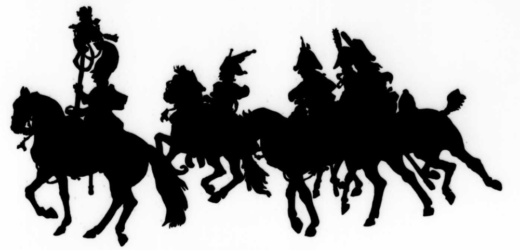
Printed outline
Page count
L'Armée suisse à travers les âges
Open from May 1st to October 18, 1896, for the Swiss National Exhibition in Geneva, the Sapajou (Capuchin Monkey) shadow theatre scheduled a dozen shadow plays very much reminiscent of the Parisian shows put on at the Chat Noir (1885-1896). The artists who collaborated on the plays (painters, musicians, poets) were however anxious to add a national element to their repertoire and to assert their singular critical positioning; they did so mostly through their weekly review Le Sapajou. Saying they missed the “child’s plays” of primitive monkeys, they derided the ambient Darwinian discourse: “the fin-de-siècle capuchin moneys […] have better things to do; the necessities of life and the “struggle for life” impose social duties on them and force them to choose a career”. During the daily performances of the theatre, the pianist Gustave Ferrari played the musical accompaniment, and H. Bertilliot narrated the play. The composer and educator Émile Jaques-Dalcroze often attended the gala events and sometimes improvised tunes on the piano.
Known for his paintings of historical events and battles, Louis Dunki has been praised for his realistic military figures in L’Armée suisse à travers les âges (The Swiss army through the ages) and for the efficacy of his timeline, which alternates depictions of feats and portraits of great men. The play thus builds a national narrative that brings legend and history together and celebrates the values of Switzerland, most particularly the “precious neutrality” it has maintained while “in the middle of States always at war” (Jules Cougnard, Journal officiel illustré de l'Exposition [Official and illustrated journal of the Exposition], n° 27, 24 July 1896).
A history teacher teaches a class about patriotism
A teacher recounts the feats of the Swiss army to his students. He begins with the Helvetians’ victory against the Romans, then mentions Guillaume Tell’s feats. The students are thrilled. He relates the battle of Sempach, Morat, and Marignano, then the Napoleonic occupation. The teacher ends his class by praising the generals Dufour and Herzog’s key role in the confederal construction of modern Switzerland.
First performance
Théâtre du Sapajou (Swiss National Exhibition)
Publications and translations
Le Sapajou, n°27, 11 June 1896, p.8